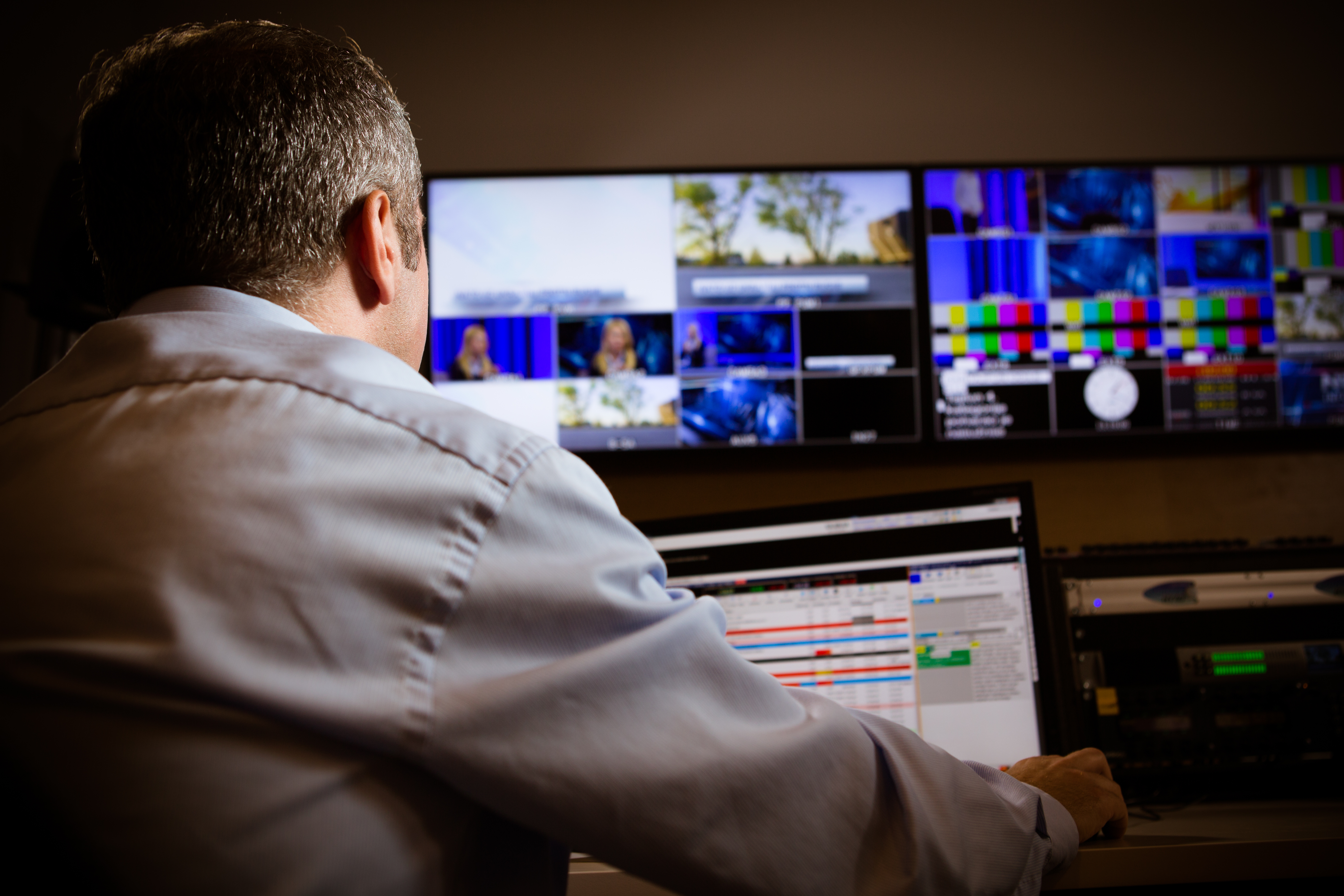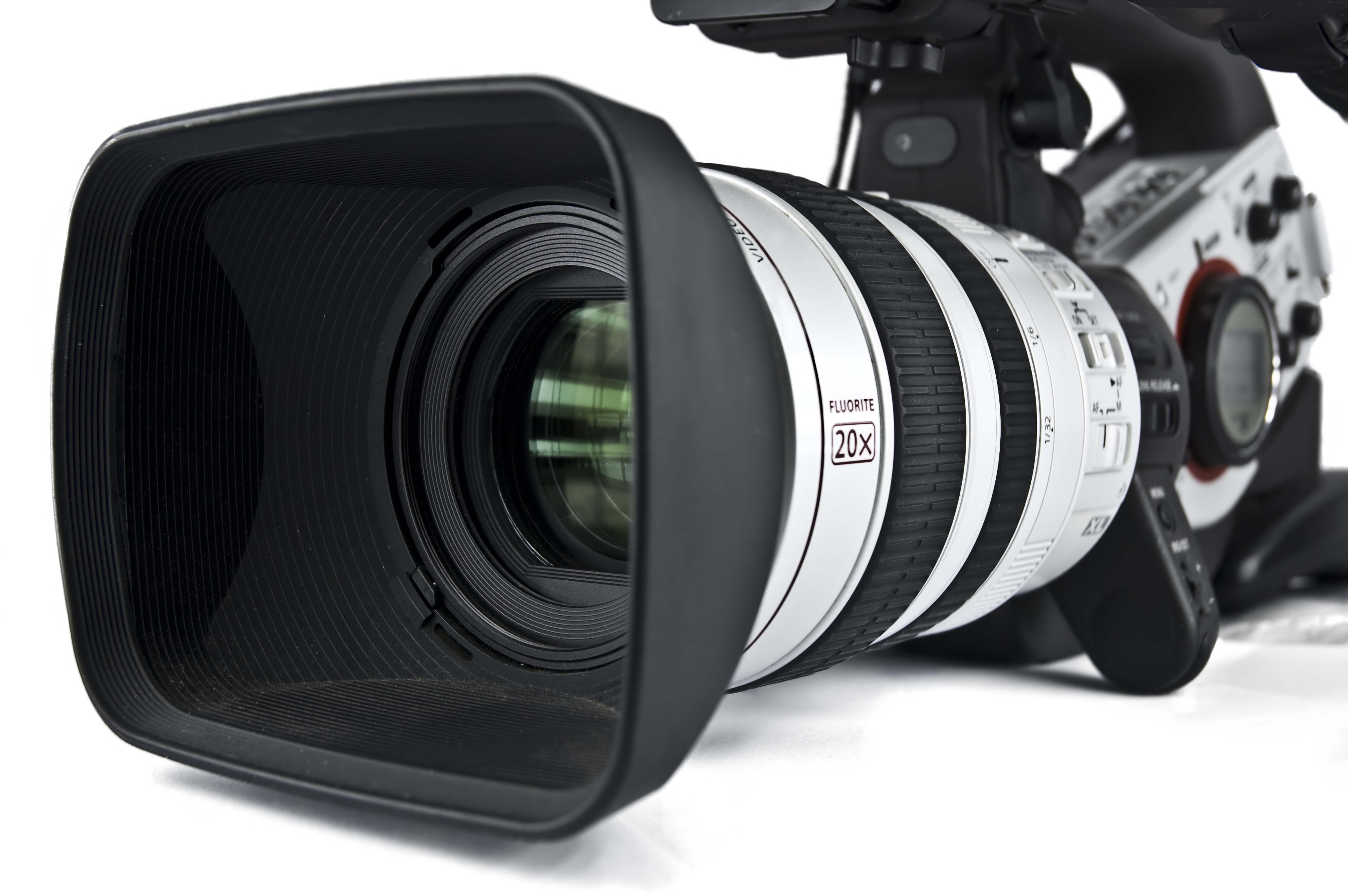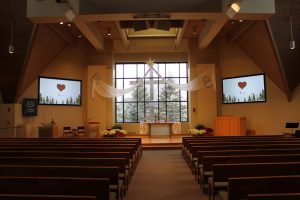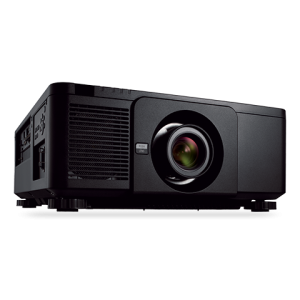Bright Idea: Using Laser Projectors to Enhance Houses of Worship
by Rich McPherson
 A house of worship’s purpose is to bring people together to share a positive message about faith, and when a facility is able to serve its members more effectively using technology, it translates to higher attendance and positive word-of-mouth – keeping current members coming back and encouraging new ones to join.
A house of worship’s purpose is to bring people together to share a positive message about faith, and when a facility is able to serve its members more effectively using technology, it translates to higher attendance and positive word-of-mouth – keeping current members coming back and encouraging new ones to join.
To meet these goals, many houses of worship constantly reevaluate their technology lineup to ensure it successfully engages the community and benefits the staff, and as new offerings hit the market, it’s important to understand the advantages of breaking away from the status quo.



 Let’s start with a quick definition of “Video on Demand”. Video on demand (VOD) is a system that allows users to select and watch video content when they choose to, rather than having to watch at a specific broadcast time. This can be available to people on some TV’s, computers, tablets and mobile phones.
Let’s start with a quick definition of “Video on Demand”. Video on demand (VOD) is a system that allows users to select and watch video content when they choose to, rather than having to watch at a specific broadcast time. This can be available to people on some TV’s, computers, tablets and mobile phones. One aspect of broadcast ministry that can easily get overlooked when choosing a new video or digital film camera is the lens. For consumer video cameras, the lens is often fixed, so you don’t have much choice in the matter. For professional video or digital film cameras, a lens can make or break the project, but if you’re not careful it could also break the bank! The quality and optical clarity of the lens is paramount, but you also have to consider the type of lens mount your camera has, and whether or not you require a fixed lens or zoom lens.
One aspect of broadcast ministry that can easily get overlooked when choosing a new video or digital film camera is the lens. For consumer video cameras, the lens is often fixed, so you don’t have much choice in the matter. For professional video or digital film cameras, a lens can make or break the project, but if you’re not careful it could also break the bank! The quality and optical clarity of the lens is paramount, but you also have to consider the type of lens mount your camera has, and whether or not you require a fixed lens or zoom lens. Trinity Lutheran Church was first formed in 1932, and moved to our current site in 1952, when the lower level of the present facility was built. Over the years, the structure changed as additions were built and remodeling occurred. With the completion of the Great Hall wing and several new classrooms in 2007, our church became better equipped to serve the ever-growing membership and ministry needs of our congregation. Our mission statement is to welcome all to worship joyfully, grow in faith and Serve near and far in Jesus’ name.
Trinity Lutheran Church was first formed in 1932, and moved to our current site in 1952, when the lower level of the present facility was built. Over the years, the structure changed as additions were built and remodeling occurred. With the completion of the Great Hall wing and several new classrooms in 2007, our church became better equipped to serve the ever-growing membership and ministry needs of our congregation. Our mission statement is to welcome all to worship joyfully, grow in faith and Serve near and far in Jesus’ name. Great video can be a great asset to a great church. But what is the most effective way to implement that video? It’s a key question to ask yourself as a church when deciding to produce videos. Going beyond the live service stream/record can enhance the reach and impact of your church’s ministry, but it can’t be done with a shotgun approach. Just pull the trigger and hope to hit your target. Creating a great video is not the same as utilizing a great video. In researching church videos for this article, I came across some spectacularly produced videos that had 100 or less views. These were created by churches with weekly attendance in the hundreds or even thousands. If the majority of their congregations aren’t even watching their videos, perhaps there’s something wrong with the strategy. Our churches don’t send teams to mission fields without hours of research and planning to make sure their resources are put to good use, so why would we do that with a complex, expensive and time-consuming video production?
Great video can be a great asset to a great church. But what is the most effective way to implement that video? It’s a key question to ask yourself as a church when deciding to produce videos. Going beyond the live service stream/record can enhance the reach and impact of your church’s ministry, but it can’t be done with a shotgun approach. Just pull the trigger and hope to hit your target. Creating a great video is not the same as utilizing a great video. In researching church videos for this article, I came across some spectacularly produced videos that had 100 or less views. These were created by churches with weekly attendance in the hundreds or even thousands. If the majority of their congregations aren’t even watching their videos, perhaps there’s something wrong with the strategy. Our churches don’t send teams to mission fields without hours of research and planning to make sure their resources are put to good use, so why would we do that with a complex, expensive and time-consuming video production? TFWM: Why did Listen Technologies acquire the Audio Everywhere brand and products?
TFWM: Why did Listen Technologies acquire the Audio Everywhere brand and products? Many houses of worship have discovered that multimedia projectors enable them to engage their congregations and to enhance worship experiences in sanctuaries, classrooms and other areas. To operate at optimal levels, projectors may require maintenance, performed either by your own tech staff or by an A/V service vendor.
Many houses of worship have discovered that multimedia projectors enable them to engage their congregations and to enhance worship experiences in sanctuaries, classrooms and other areas. To operate at optimal levels, projectors may require maintenance, performed either by your own tech staff or by an A/V service vendor.
